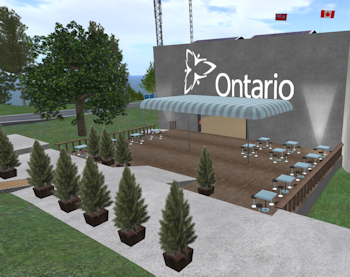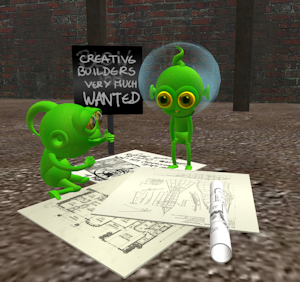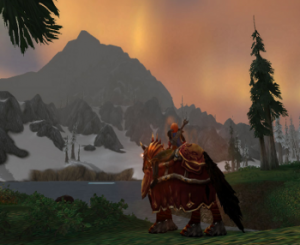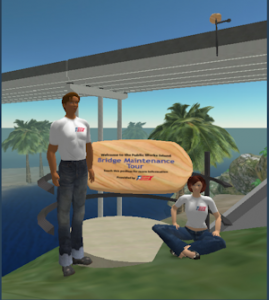 In small numbers, people can usually self-govern themselves. But as the number of people in a group grows, better control is needed. So history has shown anytime a large number of people start hanging out in a particular place, a government structure is formed. In our world today, we have nations which then have further divisions of government down to local or neighborhood levels. And while most of these levels of government are considered public, a small number are privately held and yet still considered a governing body by upper levels of government. So applying this to virtual worlds, have these digital places evolved to the point that another type of government level needs to be formed?
In small numbers, people can usually self-govern themselves. But as the number of people in a group grows, better control is needed. So history has shown anytime a large number of people start hanging out in a particular place, a government structure is formed. In our world today, we have nations which then have further divisions of government down to local or neighborhood levels. And while most of these levels of government are considered public, a small number are privately held and yet still considered a governing body by upper levels of government. So applying this to virtual worlds, have these digital places evolved to the point that another type of government level needs to be formed?
I would expect many people, particularly those who have not yet ventured into a virtual space, would scoff at the idea of creating a new type of government subdivision for computer-generated worlds. During my first few years of hanging out in places like Second Life, I had not considered the need for governance. But during those years, I observed many parallels between the growth of Second Life and the development of a city. And recently, the discussions surrounding the struggles of Linden Lab to address the needs of Second Life "residents," have me more closely analyzing the governance idea.
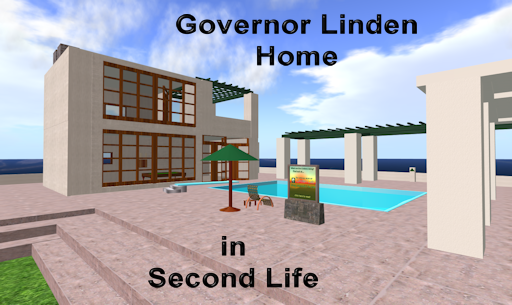 Although I don't think Linden Lab started Second Life with the intention of creating another governmental entity, it is interesting to see elements of local governance in the early days of the grid. Philip, the creator of Second Life, was labeled Governor Linden, and the users were called residents. Experiments in zoning took place on at least one of the first sims. And the subdivision and sale of land and payment of tier (tax) for that land is an emulation of land ownership in the U.S.
Although I don't think Linden Lab started Second Life with the intention of creating another governmental entity, it is interesting to see elements of local governance in the early days of the grid. Philip, the creator of Second Life, was labeled Governor Linden, and the users were called residents. Experiments in zoning took place on at least one of the first sims. And the subdivision and sale of land and payment of tier (tax) for that land is an emulation of land ownership in the U.S.
Second Life has gone through phases regarding these issues: tier is still paid and users are still residents, zoning has been created on a much larger scale with the division of adult, mature, and PG spaces, Philip is no longer referred to as Governor although public land is still held by Governor Linden. And as the Lab struggled to determine their policies in these areas, similarities between the problems faced by Linden Lab and those we face as city officials grew. Today there are demands by residents for better functioning infrastructure and platforms through which to voice opinions. Businesses are continually pushing for economic tools, incentives, regulations, and opportunities. All issues faced every day by those of us working in local government.

 At this point, Second Life has evolved to where the primary differences I see between its digital space and the physical space are in the type of infrastructure and the international population. And even the infrastructure, while different, still has many similarities to the operation and maintenance of infrastructure in the physical world because it is part of that physical world. Cities have water mains and roads; Second Life has computers and code.
At this point, Second Life has evolved to where the primary differences I see between its digital space and the physical space are in the type of infrastructure and the international population. And even the infrastructure, while different, still has many similarities to the operation and maintenance of infrastructure in the physical world because it is part of that physical world. Cities have water mains and roads; Second Life has computers and code.
So, the most challenging difference I can see is the International aspect of the Second Life population; governments in the physical world are based on geographic boundaries. Cyberspace has no geographic location in the physical world. Anyone with a computer and an Internet connection can access places like Second Life. So if a digital space became a governmental entity, into which governmental structure would it fit and in which country? And whose laws govern each person's behavior in that world?
If I travel to another country, I follow that country's rules and yet I am still bound by some of the laws in my own country. If I visit a digital space, I follow the terms of use for that world no matter where it is based in the world. Yet, because I am in the U.S., the U.S. government could argue I need to also follow laws of this country because I am using federally regulated bandwidth to access that world. So some might question, if there are already terms of use for visiting virtual worlds, why aren't those rules good enough?
 Terms of use seem to work well for regulating behavior in digital spaces when user freedoms and choices are limited. For example I don't see Blizzard dealing with the same issues facing Linden Lab. Both companies have created virtual worlds, but the MMORPG offers a more structured space with well-defined and limited abilities for its users. While in Second Life, the users have many more freedoms and choices. I compare the MMORPG to a museum I would visit in a city like Chicago. My museum visit is structured and defined by the rules and environment created by that museum. While my behavior and actions in Chicago are only bound by the laws of the city, state, and U.S. government.
Terms of use seem to work well for regulating behavior in digital spaces when user freedoms and choices are limited. For example I don't see Blizzard dealing with the same issues facing Linden Lab. Both companies have created virtual worlds, but the MMORPG offers a more structured space with well-defined and limited abilities for its users. While in Second Life, the users have many more freedoms and choices. I compare the MMORPG to a museum I would visit in a city like Chicago. My museum visit is structured and defined by the rules and environment created by that museum. While my behavior and actions in Chicago are only bound by the laws of the city, state, and U.S. government.
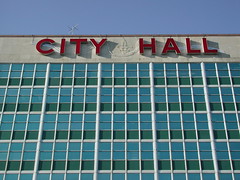
Even with the growing similarities between digital and physical places, governance in virtual worlds is probably not on the immediate horizon. People are still just getting used to the idea of a digital world. But this concept of a virtual world functioning as an actual place could help companies like Linden Lab better understand what they have created. And as the Lab is finding out, running local government is not easy. But it is an age-old practice with thousands of years of models and literature available for guidance. Maybe what Linden Lab needs now to sort out all their issues is someone with a background in public administration.


